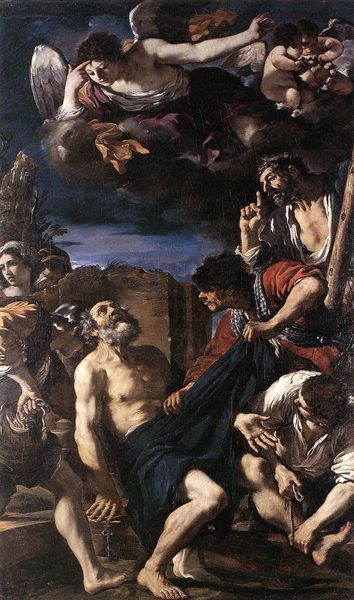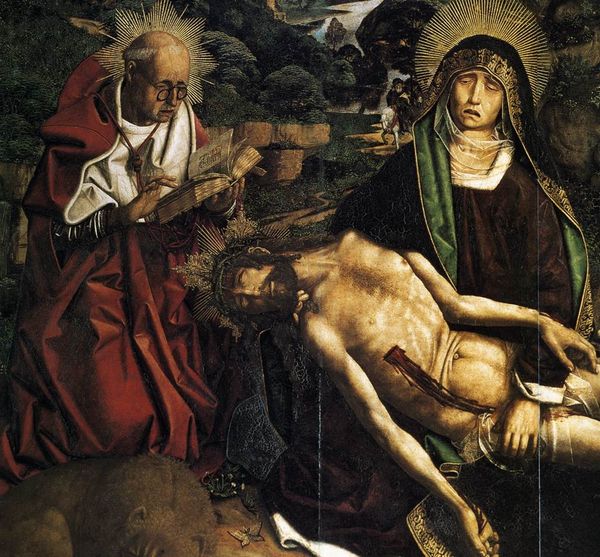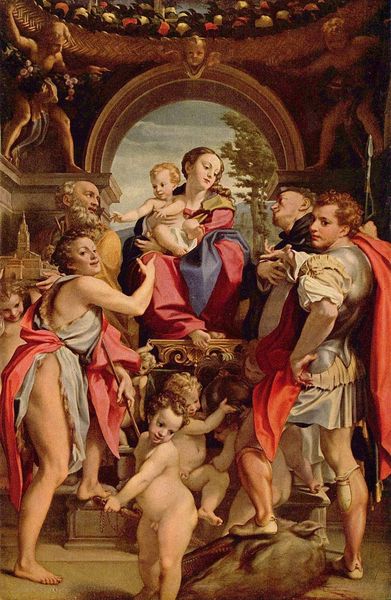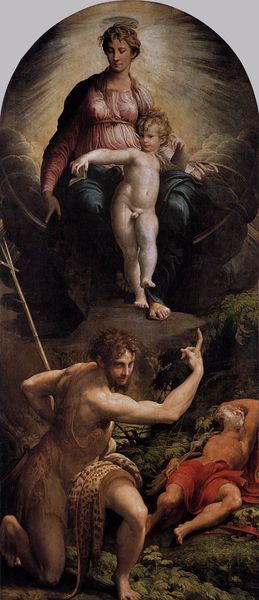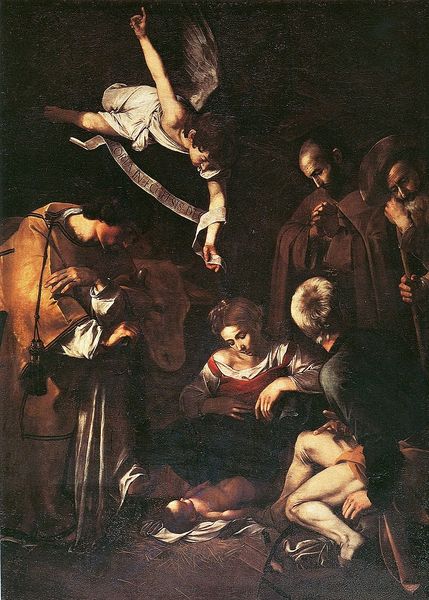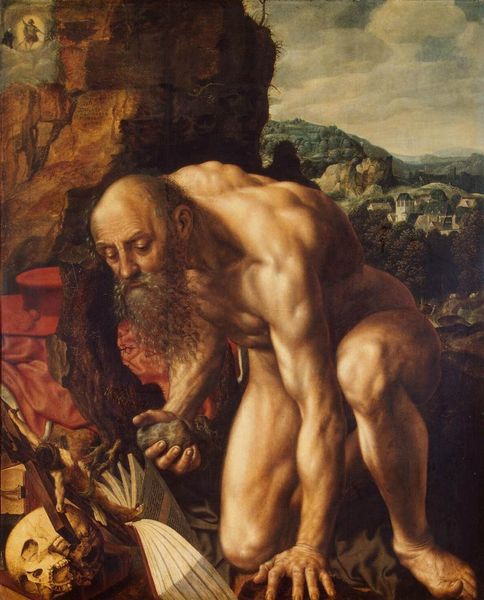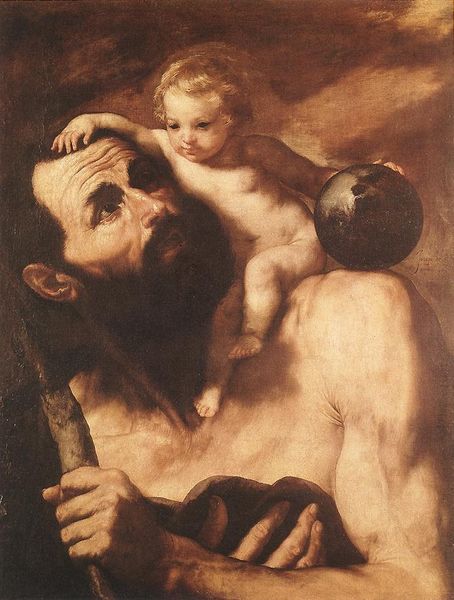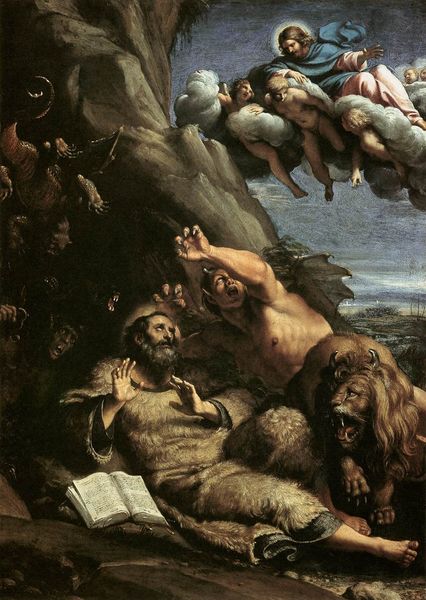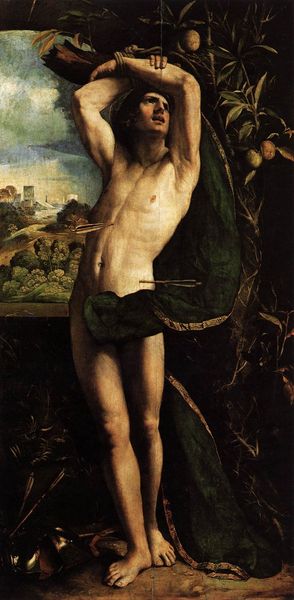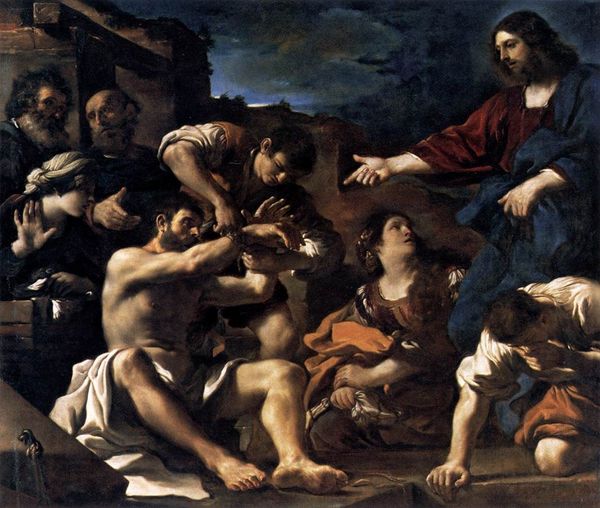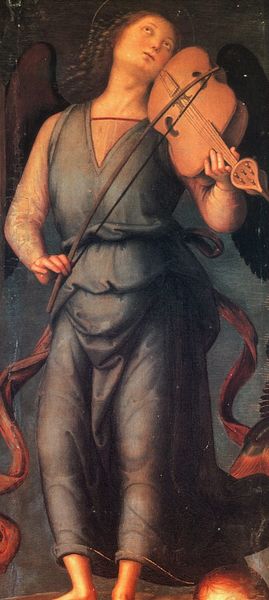
panel, oil-paint
#
portrait
#
panel
#
oil-paint
#
landscape
#
figuration
#
oil painting
#
history-painting
#
northern-renaissance
#
realism
Dimensions: 88 x 52 cm
Copyright: Public domain
Curator: Immediately, this piece hits me with raw emotion. There's a vulnerability that just jumps out. It’s stark. Editor: We’re looking at Hans Memling's "St. Jerome," an oil-on-panel painting created around 1490. It’s currently housed right here in the Kunstmuseum Basel. What social statements, artistic achievements, and symbolic markers did Memling weave into this piece? Curator: Right. Social markers... maybe. Artistic... sure! The way he renders the figure’s emotion, though. He is gripping a stone. It’s so direct, like he wants to heave it! You see his internal struggle externalized—guilt, remorse, maybe? Editor: Saint Jerome, as many know, translated the Bible into Latin. His presence in art serves to remind us about access to religious texts. His presence underscores the institution of the church and religious authority. The crucifix reminds us of Jesus Christ, and the need for the Bible, perhaps. How is it that Memling uses a public image of deep religious significance, only to arrive at this raw expression of angst? Curator: See, to me, the "public" melts away, and it’s all Jerome’s incredibly personal journey. The lion in the cave, even the landscape peeking out, isn’t just scenic backdrop, it's all Jerome, distilled in a perfect portrait. The redness—the rocks, the robes—almost hurts to look at, as if it represents that hurt he feels inside. And then you've got that odd patch of netting that is snaking toward his foot; so evocative. Editor: Well, artists often wrestled with reconciling faith, doctrine, and subjective feeling. You look at other iterations of St. Jerome and can trace this tension across decades. Memling’s version—what would it have signified within its original viewing context? What new avenues of reflection could he make possible at the time? Curator: That context, yes, important. But gosh, if you zoom in—really get close—the eyes themselves, brimming! A 1490 version of raw truth. To the 21st century, to me it still screams authenticity, and that to me is timeless. Editor: Indeed, so moving even centuries later. Thanks for your insight. Curator: You too, truly.
Comments
No comments
Be the first to comment and join the conversation on the ultimate creative platform.
